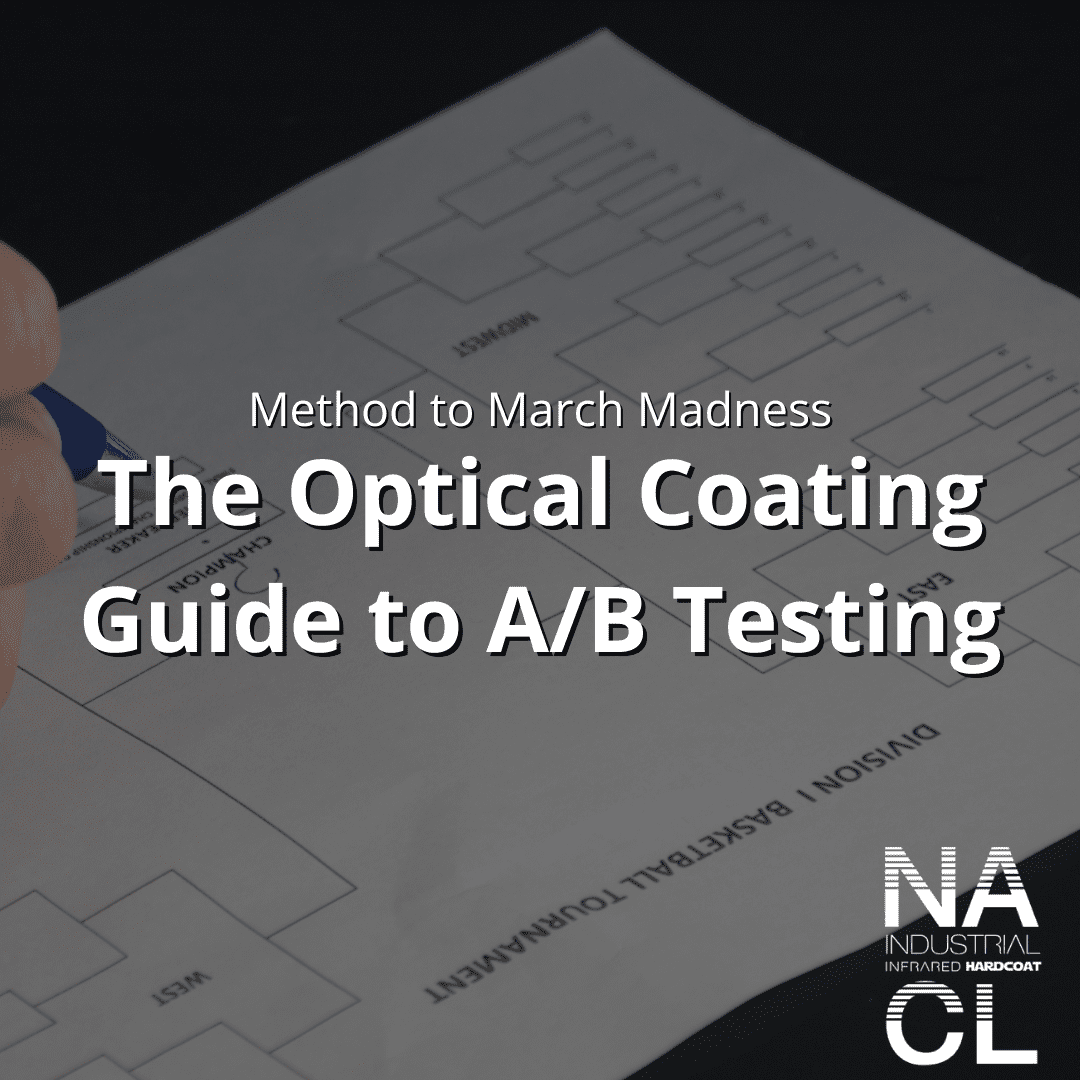The Optical Coating Guide to A/B Testing
In the fast-paced world of industrial optics, making informed decisions is paramount. Whether it’s optimizing lens coatings or improving processes, the key lies in data-driven insights. This is where A/B testing comes into play, offering a systematic approach to experimentation and optimization. To help you navigate this process effectively, let’s explore the concept of building a solid testing bracket, inspired by the March Madness tournament.
The March Madness Bracket Analogy:
Imagine A/B testing as a tournament bracket, with each round representing a step closer to identifying the optimal solution. Just like teams competing in March Madness, variations compete against each other until a winner emerges. Each round of testing eliminates underperforming variations, ultimately leading to the selection of the most effective solution.
Factors for Building a Solid Testing Bracket:
1. Serialization:
Serialization is the process of assigning unique identifiers to each experiment or variation to the batch or individual lens level. In A/B testing, this ensures that experiments are traceable and reproducible. By serializing batches or individual parts, quality teams can track results and maintain a comprehensive record of testing activities.
2. Data:
Keeping accurate data is essential for A/B testing success. It involves capturing detailed information about experiments, including variables, outcomes, and environmental conditions. Robust data logging practices enable engineers to analyze results effectively and derive meaningful insights.
3. Changing One Variable at a Time:
In A/B testing, it’s crucial to change only one variable at a time to isolate its impact. This allows engineers to attribute any differences in outcomes to the specific change being tested. By following this principle, quality engineers can conduct controlled experiments and draw reliable conclusions.
Finalizing Your Solidified Process:
Once all rounds of testing are complete, it’s time to finalize the solidified process. This involves analyzing results, selecting the winning variation based on statistical significance, and validating the findings. By following a rigorous approach to interpretation and validation, quality engineers can confidently recommend changes to production and drive continuous improvement.
Conclusion:
In the world of industrial optics, A/B testing is a powerful tool for optimization. By building a solid testing bracket and following best practices such as serialization, data logging, and changing one variable at a time, engineers and project managers can make informed decisions based on empirical evidence. So, gear up, embrace the March Madness spirit, and let the testing begin!






